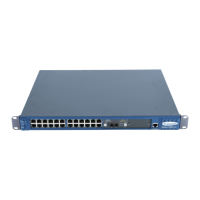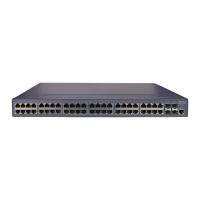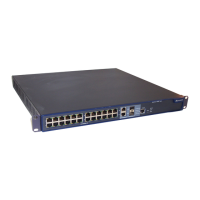Operation Manual – Multicast Protocol
Quidway S3900 Series Ethernet Switches-Release 1510 Chapter 8 MSDP Configuration
Huawei Technologies Proprietary
8-2
RP1
Source
RP2
RP4
RP3
PIM-SM 1
PIM-SM 2
PIM-SM 3
PIM-SM 4
user
user
user
SA
SA
SA
SA
SA
SA message
MSDP peers
Join
Join
Figure 8-1 MSDP peering relationship
Note:
MSDP peers are interconnected over TCP connections (via port 639). A TCP
connection can be established between RPs in different PIM-SM domains, between
RPs in the same PIM-SM domain, between an RP and a common router, or between
common routers.
Figure 8-1 shows the MSDP peering relationship between RPs.
Unless otherwise specified, examples in the following descriptions are based on MSDP
peering relationship between RPs.
An active multicast source S exists in the PIM-SM1 domain. RP1 in this domain learns
the specific location of the multicast source S through multicast source register
messages, and then sends source active (SA) messages periodically to MSDP peers
(RP nodes) in other PIM-SM domains. An SA message contains the IP address of the
multicast source S, the multicast group address G, the address of the RP that has
generated the SA message, and the first multicast data received by the RP in the
PIM-SM1 domain. The SA message is forwarded by peers. Finally, the SA message
reaches all the MSDP peers. In this way, the information of multicast source S in the
PIM-SM domain is delivered to all PIM-SM domains.
By performing reverse path forwarding (RPF) check, MSDP peers accept SA
messages only from the correct paths and forward the SA messages, thus avoiding SA
message loop. In addition, you can configure a mesh group among MSDP peers to
avoid SA flooding among MSDP peers.
Assume that RP4 in the PIM-SM4 domain receives the SA message. RP4 checks
whether receivers exist in the corresponding multicast group. If so, RP4 sends an (S, G)
join message hop by hop to the multicast source S, thus creating a shortest path tree

